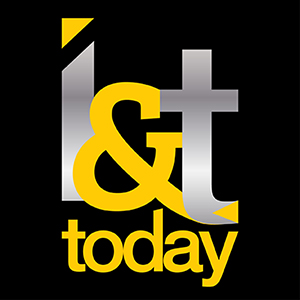2023 has been an excellent year for Meta so far. After having seen his shares plunge to their lowest price in years, launching a “racist” chatbot, and laying off over 11,000 employees, the company seems to finally be catching a break. Not only did the company announce it had exceeded the estimates for revenue in its fourth quarter but also that a $40 billion buyback had been authorized.
While this news certainly was great for the tech giant, some of the most important came in the form of a win over the Federal Trade Commission. The federal agency filed an injunction back in July 2022 that would prevent Meta from buying Within, a VR startup focused on creating immersive stories and experiences through VR and AR.
Now, a federal judge has rejected the FTC’s request and allowed Meta to continue with the $400 million acquisition unless an appeal takes place. With Meta now entering what it is calling the “year of efficiency” on the right foot, Zuckerberg is committed to continuing prioritizing Meta’s AI and Metaverse efforts.
“Our priorities haven’t changed since last year. The two major technological waves driving our roadmap are AI today and over the longer term the metaverse,” Zuckerberg wrote on February 1st. “. . . Later this year, we’re going to launch our next generation consumer headset, which will feature Meta Reality as well, and I expect that this is going to establish this technology as the baseline for all headsets going forward, and eventually of course for AR glasses as well.”
While other tech giants like Nvidia, Epic Games, Microsoft, and Unity have started working on developing their own versions of the Metaverse, it is Meta the one that has grabbed the world’s attention. This is not necessarily positive for the tech giant as with that attention has also come to a lot of criticism ranging from making fun of Meta’s announcement of legs to prompting experts like Tony Parisi to create a set of guidelines for what the Metaverse should be like.
“It’s a little ditty I wrote and published back in October last year after Mark Zuckerberg dropped the ‘M’ word. Something that obviously Meta didn’t invent and that we all know goes back 30 years at this point to a novel called Snow Crash,” said Parisi in a keynote for MetaTraversal back in 2022. “Well, the world went crazy, kind of lost its mind, and decided we’re all doing the Metaverse. Meanwhile, there’s a lot of us over in spatial commuting land who have been grinding away at this for years and are quite familiar with a lot of the issues.”
Parisi has spent most of his thirty-plus year career working on the Metaverse, pursuing a dream of virtual worlds open to all and not controlled by large corporations. After an early tenure as developer at legendary software giants Lotus and BBN, Parisi began developing his own products and collaborating on standards for the Metaverse.
He co-created the Virtual Reality Modeling Language, the original standard for 3D graphics on the web in 1994. Since that time he has worked on multiple standards and served as an executive at companies developing the infrastructure for the Metaverse, including a recent six-year stint as head of VR/AR at Unity.
It would be Meta’s pronouncements around the Metaverse and the general hype/misinformation around the development of “metaverses” that would prompt Parisi and the rest of the community to immediately respond. Parisi would come to publish the “Seven Rules of the Metaverse”, which state:
- There is only one Metaverse.
- The Metaverse is for everyone.
- Nobody controls the Metaverse.
- The Metaverse is open.
- The Metaverse is hardware-independent.
- The Metaverse is a Network.
- The Metaverse is the Internet.
To anyone who takes a closer look at the idea of the Metaverse that Meta seems to be working on, there is an immediate clash with more than one of these ideas. To begin with, Meta (and other giants) are claiming to be building “the Metaverse”, which by itself is already contrary to rules 3, 6, and 7. The company’s vision is also in breach of all of the other laws but it is this idea of creating “the Metaverse” that worries experts the most.
Neal Stephenson, who wrote Snow Crash and through it came up with the idea of the Metaverse, has been critical of Meta’s vision. In 2022, it was announced that he was choosing to go head-to-head with Meta by working on creating an open-source platform and standards for an open Metaverse through a new startup: Lamina1.
The startup, which was co-founded by crypto pioneer Peter Vessenes and has Tony Parisi as Chief Product Officer, is aiming to deliver a Layer 1 blockchain that serves as the infrastructure needed for the operation of the Open Metaverse. With this purpose in mind, the platform has already launched a rolling fund intended to help Web3 builders start creating content for their Open Metaverse.
Lamina1 is part of a broader industry movement toward open standards for the Metaverse, as a founding member of the Metaverse Standards Forum. This group includes technology giants like Microsoft, Unity, Epic and yes, even Meta – an indication that the tide may be turning in terms of industry cooperation, based on the realization that no one company can go it alone to build the Metaverse.
Even Meta now publicly acknowledges that it will require an industry-wide effort to fully realize the Metaverse, though time will tell how “open” their version will be.
Once again, Parisi is in the middle of the action. Joining Lamina1 to work alongside the man who inspired his work is a natural evolution of his career trajectory– and the company’s involvement in creating formative standards is no accident.
Many years after VRML, Parisi was on the team that created glTF, a file format standard for three-dimensional scenes and models used in web and mobile applications. Parisi served as the specification co-editor from 2012 to 2017, designed features such as the original animation system, and wrote the initial open source libraries for web browsers and the Unity game engine.
As the effort was gaining steam, Parisi suggested the name “glTF” (Graphics Language Transmission Format) among other working titles, which the group accepted.
Parisi was also instrumental in getting the format adopted by companies such as Oculus and Microsoft in 2016, which helped propel the format into wide use and industry acceptance.
“So much of what goes into standardization happens outside of the specifications and code. It’s also about how companies can join in a spirit of collaboration to create something that benefits everyone.”
As a result, glTF has become the global standard for real-time 3D graphics content in web, mobile and virtual and augmented reality, ratified by ISO.
“glTF powers interactive websites, 3D objects embedded in PowerPoint presentations, Instagram filters and Snap lenses, and even holographic content running in web browsers,” noted Parisi.
glTF is also the most widely used 3D format for non-fungible tokens (NFTs) of models and animations on the blockchain, another sign of the format’s ubiquity– and something none of its designers would even have imagined a decade ago. “And that is the ultimate power of a standard: once the rails are put in place, there is no telling where people are going to take the train.”
The battle for the future of the Metaverse is underway, and not something to be taken lightly, as it is already clear that this technology is foundational to the future. It’s going to be a matter of deciding what kind of Metaverse we all want: one controlled by a company that doesn’t seem to make it to a month without controversies, or one controlled by the people. And according to Parisi, it’s going to take years and steady and consistent effort.
“While the enthusiasm is infectious, and this should rightly be a time of joy — we are, after all, on the cusp of something truly transformative — a tempering of expectations and lowering of temperatures is advisable.“ Wrote Parisi in the Seven Rules. “There is a lot to do in the years ahead. And while many of us are doing our best to work toward a shared vision and understanding, others are only in it for themselves. Therefore, caution is also in order: don’t believe everything you hear.”










